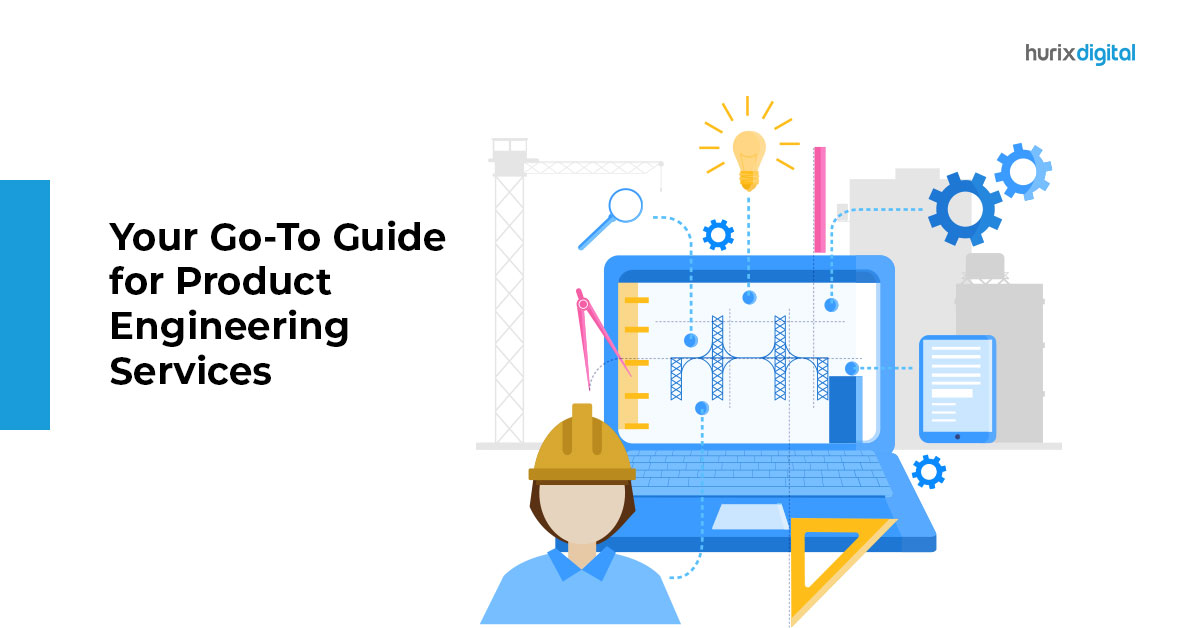Your Go-To Guide for Product Engineering Services
It is not an easy feat to impress modern-day customers! That is why businesses worldwide are constantly engaged in various processes to launch newer and better products regularly to keep up with changing customer preferences.
Product engineering services are becoming increasingly popular in the contemporary business era, enabling businesses to quickly create commercially viable products and launch them in the market. These service providers are consultants who create new products with improved features and enhanced functionalities with the help of various tools and techniques.
This industry is ever-expanding, and the Product Engineering Services Market Research report predicts the global product engineering services market size is set to grow from $1085.8 billion in 2021 to $1610.6 billion by 2031. This indicates that it is no longer sustainable for companies to simply create and introduce new products with basic research. Companies must dive deep into industry research, provide value, and be prepared to invest in high-quality product development services.
Table of Contents:
- What is Product Engineering?
- What are the Main Areas of Product Engineering
- Types of Product Engineering Services
- Closing Thoughts
What is Product Engineering?
Product engineering refers to generating an idea for a commercial product through market research, then designing, developing, testing, manufacturing, and deploying it. It is a comprehensive framework normally split into different phases, with different teams working on specific aspects of product engineering. The entire Product development services process is designed to maximize the value companies derive from a product throughout its product life cycle (PLC).
What are the Main Areas of Product Engineering?
Three major areas of product engineering services call for a strong product development mindset.
1. Creation of new products
Companies must constantly develop new products to cater to the changing demands of customers. No company can survive long with just a few products in its repertoire.
Creating new products is a major function of product engineering services.
- As the first step, product development teams explore ideas to find good ones that can be converted into manufactured products.
- Then, a prototype is created, and market testing is done.
- After many quality assurance checks, the product is finally produced for commercial sales.
2. Upgrade legacy products
Many companies have legacy products that have sold well for decades. However, these products must be upgraded after a few years to stay relevant. Modernizing traditional designs while staying true to the company’s legacy comes with several challenges that product engineering services have to navigate. Integrating newer features into the existing product design while considering the budget constraints is one such major challenge.
3. Rationalizing systems
Product engineering services can’t be implemented in a vacuum. Organizations must create several disjointed systems for every phase of the product engineering services process. The company must also ensure that these disjointed systems work in tandem to ensure the process is implemented smoothly. A strong network of systems needs to be in place so that good quality, meaningful new products are produced regularly.
Types of Product Engineering Services
Product engineering services encompass a vast array of services ranging from software and embedded systems development to IoT and cloud computing services.
1. Software engineering services
Software engineering services include researching, analyzing, and creating computer operating systems and software programs. These services focus on optimizing the systems and programs of a business and ensuring that they run efficiently without any hindrances.
Software engineering services can encompass agile software development, digital platforms, and quality assurance. They can also include software integration engineering and security engineering.
2. Embedded systems development services
Embedded systems software programs are specialized programming tools in embedded devices. These programs facilitate the functioning of the machines and manage hardware systems and devices. Embedded software controls the functioning of a specific set of hardware devices while ensuring the highest levels of efficiency.
Embedded systems software can function independently on preset parameters without requiring human inputs from time to time. The software can be calibrated according to the organization’s needs and connected to other devices.
3. IoT development services
IoT development involves creating, designing, developing, and deploying IoT applications and products. These services also include implementing coding tasks and configuration required to build and maintain the different software and hardware aspects of IoT solutions.
Custom IoT development services cater to the specific requirements of a business. IoT development is vast and may encompass cloud programming, security, hardware device programming, systems engineering, networking, and more. It is highly collaborative and needs to be robust, scalable, secure, and user-friendly.
Also Read: How IoT Will Impact Your Mobile App Development
4. Cloud computing services
Cloud computing refers to the on-demand delivery of various computing services and resources through the Internet. These include servers, applications, databases, software tools, networking, etc. Cloud computing services allow organizations to pay only for the resources they use and thus help to reduce operating costs.
Cloud-based storage lets you save files to a remote database instead of proprietary hard drives or local storage devices. These files can be accessed anytime through the Internet. Cloud computing offers many benefits, including cost savings, higher productivity, improved speed and efficiency, and enhanced performance.
5. DevOps services
DevOps is a delivery model designed to enhance productivity at different stages of the software development lifecycle (SDLC). It involves extensive planning, coding, testing, deploying, and monitoring of the SDLC to enhance its overall productivity.
DevOps services include creating software programs that fully satisfy user requirements and perform well. These services ensure the organization can successfully implement strategies such as continuous delivery (CD) and continuous integration (CI) to achieve business goals.
Also Read: Test Automation and DevOps: What You Need to Know
Closing Thoughts
The smooth and effortless implementation of product engineering services is imperative to the long-term success of any business organization. Product engineering services are required to create new products, update existing legacy products, and build a robust system that supports the process of innovating new meaningful products.
Contemporary companies employ several types of product engineering services, including software engineering services, embedded systems development services, IoT development services, and cloud computing services, to stay relevant in the marketplace.
Are you looking to upgrade the product engineering services process in your organization? With more than two decades of experience in the IT and education sector, Hurix Digital is your best bet to outsource all your product engineering needs. Contact our experts to discuss your organization’s product engineering requirements and build a brilliant system that caters to your unique needs.

SVP & Head – Hurix Technology Solutions
Global Delivery head with 25 years of working experience in NYC investment banks and fintech companies. Hands-on technology delivery management and program management, accountable for stakeholder relationships, Strategic roadmap, P&L, Revenue growth, Account Management, and employee satisfaction.









